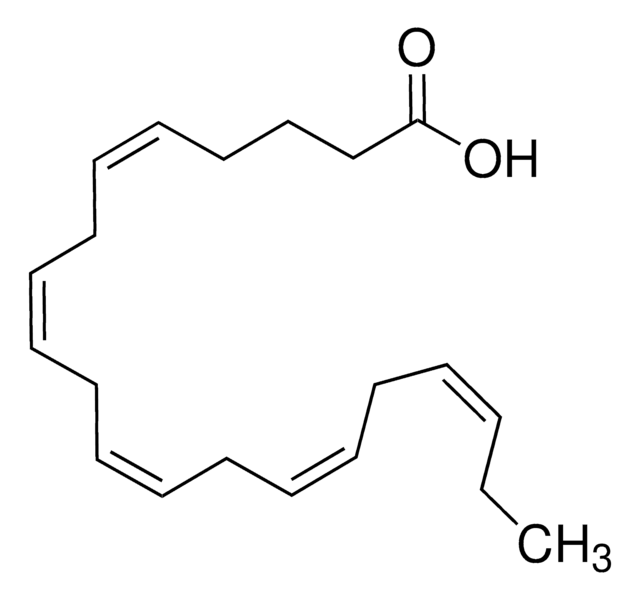E6627
cis-5,8,11,14,17-Eicosapentaenoic acid sodium salt
≥99% (capillary GC)
About This Item
Produtos recomendados
fonte biológica
synthetic (organic)
Nível de qualidade
Ensaio
≥99% (capillary GC)
Formulário
film or powder
cor
white to off-white
solubilidade
methanol: 50 mg/mL, clear to slightly hazy, colorless to faintly yellow
Condições de expedição
dry ice
temperatura de armazenamento
−20°C
cadeia de caracteres SMILES
[Na].CC\C=C/C\C=C/C\C=C/C\C=C/C\C=C/CCCC(O)=O
InChI
1S/C20H30O2.Na.H/c1-2-3-4-5-6-7-8-9-10-11-12-13-14-15-16-17-18-19-20(21)22;;/h3-4,6-7,9-10,12-13,15-16H,2,5,8,11,14,17-19H2,1H3,(H,21,22);;/b4-3-,7-6-,10-9-,13-12-,16-15-;;
chave InChI
TVEGTERCKGGVCJ-LIJGWLRISA-N
Informações sobre genes
human ... ALOX5(240)
mouse ... ALOX5(11689)
rat ... ALOX5(25290)
Procurando produtos similares? Visita Guia de comparação de produtos
Descrição geral
Aplicação
- to study its effect on the pathology of lupus in drug-induced and spontaneous mouse models
- to pretreat mouse alveolar macrophages to study the effect/relationship between amiodarone and eicosapentaenoic acid (EPA) concerning the cytokine release
- to examine if pharmacological correction with EPA supplementation might restore autophagic flux and reduce renal lipotoxicity in mice
Ações bioquímicas/fisiológicas
Código de classe de armazenamento
11 - Combustible Solids
Classe de risco de água (WGK)
WGK 3
Ponto de fulgor (°F)
Not applicable
Ponto de fulgor (°C)
Not applicable
Equipamento de proteção individual
Eyeshields, Gloves, type N95 (US)
Escolha uma das versões mais recentes:
Já possui este produto?
Encontre a documentação dos produtos que você adquiriu recentemente na biblioteca de documentos.
Os clientes também visualizaram
Artigos
The potential for the prevention and treatment of cardiovascular disease through increased dietary intake of omega-3 (w-3) fish oils is not a recent scientific discovery.
Nossa equipe de cientistas tem experiência em todas as áreas de pesquisa, incluindo Life Sciences, ciência de materiais, síntese química, cromatografia, química analítica e muitas outras.
Entre em contato com a assistência técnica







